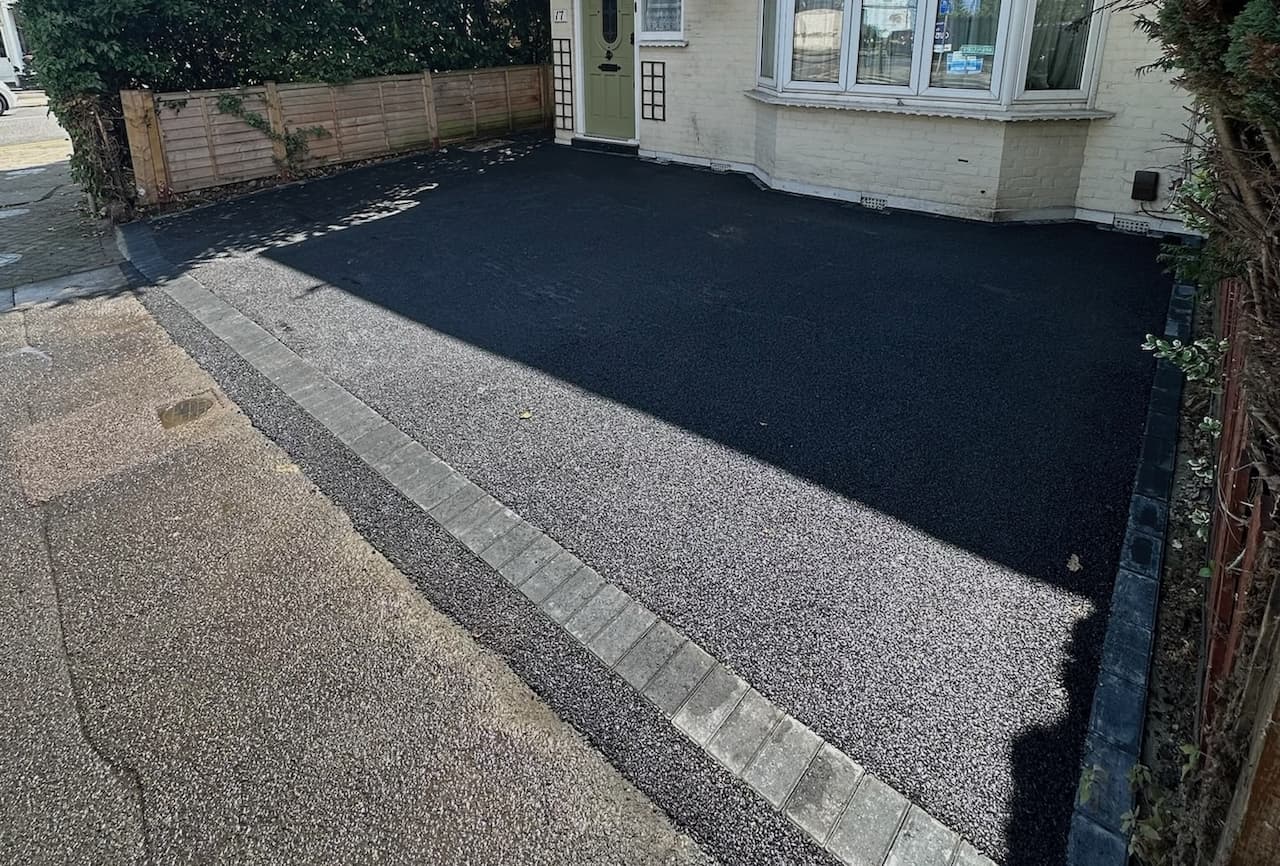Is a Tarmac Driveway a Budget-Friendly Solution for You?
May 28, 2025 Driveway Resurfacing, Driveways, Tarmac Driveways 5 min read

The search for a cost-effective driveway is stronger than ever. With household budgets under pressure, homeowners want a driveway that looks good, lasts for years, and doesn’t break the bank. This is where the tarmac driveway stands out. Known for its clean black finish and widespread use, tarmac is seen everywhere—from residential cul-de-sacs to busy car parks. But is it truly the right fit for your wallet and your needs?
What Is a Tarmac Driveway and Why Is It Popular?
A tarmac driveway uses a material called tarmacadam. It’s made by mixing crushed stone with tar or bitumen, creating a strong, even surface. The result is a smooth, dark finish that looks modern and tidy outside almost any home.
Tarmac used to be mostly for roads, but it’s now a favourite for homes thanks to:
- Reliable durability
- Fast application
- Clean, simple look
Because of these qualities, tarmac driveway surfacing is popular with anyone who wants great value and dependable performance. You’ll see tarmac driveways on many UK streets.
Key Features and Benefits of Tarmac Driveways
Tarmac driveways offer advantages that go beyond price.
- Durability stands near the top of the list. Tarmac can take the weight of cars, vans, and even light trucks without flinching.
- Low maintenance is another major plus. Unlike gravel, tarmac won’t scatter. Unlike concrete, it rarely cracks if the ground moves slightly. Apart from simple sweeping and the odd clean, it won’t take much to keep your drive looking good.
- Quick installation is a key benefit. Most tarmac driveways can be laid in one or two days. That means less disruption and faster use of your driveway.
All of these features add up to smart, long-term savings. You avoid costly repairs and ongoing upkeep that drive up the real price of other driveway types.
Evaluating the True Cost of a Tarmac Driveway
The first thing that comes to mind is usually the upfront cost. Tarmac is often cheaper to install than block paving or patterned concrete. But it’s important to look at the full picture:
Initial installation price includes:
- Ground preparation
- Laying the base layer (often crushed stone)
- Applying and smoothing hot tarmac
Tarmac also needs proper foundations and drainage to avoid pooling water and to keep the surface stable. Edging with bricks or stone can boost the look but adds to the total.
Average maintenance costs are much lower than with many alternatives. Tiny cracks can be sealed, and a fresh layer can be added years down the line without ripping everything up.
When comparing, check how tarmac stacks up to options like gravel, resin, or block paving. Each type has its own costs and needs over time. For a comparison with another popular choice, visit resin bound vs tarmac driveways.
Common Misconceptions About Tarmac Driveway Costs
A tarmac driveway often gets an unfair reputation. Some assume it’s not built to last, or that it will constantly need attention. That’s not the case.
Misconception 1: Tarmac driveways crack easily.
- Modern tarmac is flexible and resists cracking, especially when installed on a stable sub-base.
Misconception 2: They need lots of repairs.
- Routine care is usually limited to the odd clean and occasional seal.
Misconception 3: Tarmac doesn’t add to property value.
- In reality, a smart, low-maintenance drive can boost first impressions and kerb appeal.
For more info about the most common ideas (and myths) surrounding this surface, check out common myths about tarmac driveways.
Are There Hidden Costs or Long-Term Savings?
Every project has variables that can bump up the price. With tarmac, extra costs may include:
- Heavy site preparation (if your current driveway is uneven or poorly drained)
- Meeting local council rules for run-off or edging
- Repairs to underground pipes or cables uncovered during installation
However, tarmac’s real value often appears in the years after it’s laid. You don’t need to lift and relay blocks, as you do with block paving. Patches are easy to repair, and the whole surface can be renewed with a top layer—saving you from a full replacement.
Key Factors for Budgeting:
- Site condition: stable, well-drained sites cut costs
- Driveway size and shape: curves, slopes, or extra-wide entries add to total
- Longevity: most tarmac driveways last 15-20 years with basic care
If you want the smoothest ride for your wallet, plan for any extras upfront and chat with a professional before starting work.
A tarmac driveway keeps things simple, sturdy, and budget-friendly. The costs stay predictable, the maintenance is light, and the result is a practical and attractive drive that fits most homes.
Before you commit, balance your budget with your needs. Compare tarmac to other options for lifespan, care, and day-to-day performance. Curious about how tarmac measures up? Explore our guides or reach out for advice. Your new driveway could be just a step away—without hidden surprises.
Get a free quote
Call us on 020 3808 8086 or fill in the short form below.
"*" indicates required fields